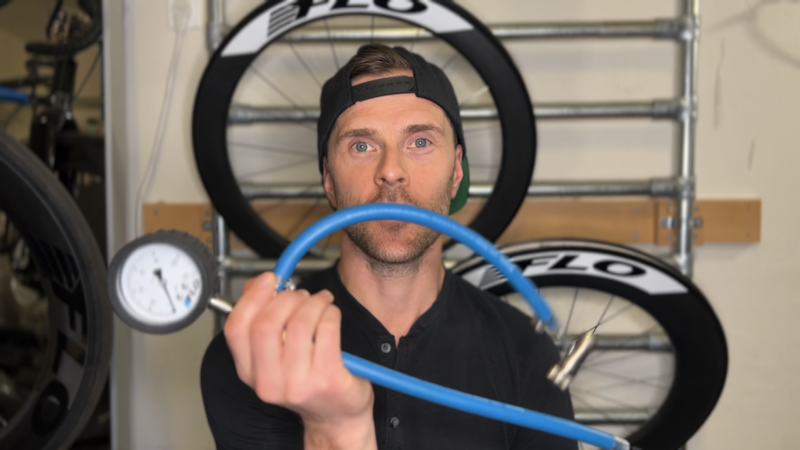Lately, I’ve presented a number of webinars on Cycling Efficiency to cycling teams and how temperature change impacts tire pressure is a large discussion topic. I can’t tell you how many times I’ve walked by T2 in Kona only to hear tires popping mid-day after the sun comes up. Why is that happening? Tire pressure changes by 2% for every 10 degree Fahrenheit change in temperature. When you pump up your tires in a cold hotel room, then the bike sits in the sun, the pressure shift can be dramatic and cause a flat before you even start on the bike.
This blog article discusses how to set the ideal tire pressure regardless of the current temperature. We even built a calculator that informs you of the adjusted tire pressure.
Remember, for every 1 psi that you are over in pressure you lose 1 watt to rolling resistance. It’s why we’ve taken such measures to help athletes set accurate pressures. Using our tire pressure charts, the FLO Air Gauge, and this calculator will have you with the most accurate tire pressure on the course. Note: The Calculator only work on web which is a limitation of Google Sheets.

Tire Pressure Protocol
I’ve spent countless hours setting tire pressures when doing on-road testing. The goal in on-road testing is keeping a consistent tire pressure during the test. If you end with a different tire pressure then when you started, that data is no good. Our protocol for athletes looking to get an accurate tire pressure during your race is below:
- Ensure you have a tire that holds pressure. Many races require racking overnight. A good tire set-up should hold air well.
- Find your “Ideal Tire Pressure.” Use our tire pressure charts located on all wheel pages or any other calculator. Remember this value, you will need it later.
- Warm up your tires. Ride the bike for 3-5 minutes to get the rubber warmed up. The change in temperature of the rubber increases the pressure of the tire so even if you are racing the day after, you still want warm tires when adding air. If the tires cool down before your race, the tire pressure will drop but as soon as you start riding, the increase in temperature from warm tires will bring the tire pressure back up to ideal.
- Find your “Current Air Temperature” and “Race Air Temperature.” These will likely be different. For example, the early morning air temperature is 65 degrees Fahrenheit when you are adding air to your tires but you’re racing later that day with an expected temperature 100 degrees Fahrenheit. You will set a lower tire pressure than the ideal tire pressure you found in Step 2 above.
- Use the calculator below to find this “Adjusted Tire Pressure”. Place the three values found above (Current Air Temperature, Race Air Temperature, Ideal Tire Pressure) under the blue columns and the Adjusted Tire Pressure will be calculated in black column. (Note: this calculator is not mobile friendly)
- Check out the video below for a quick walk through.
Walk-Through Video
The Calculator

Co-founder at FLO Cycling. Jon manages the day to day operations and acts as the lead engineer for all FLO products.
